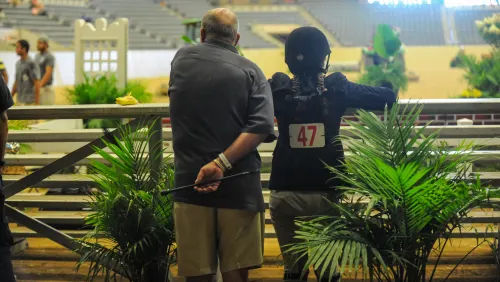The last two editions of the World Equestrian Games have had some great competitive moments and their share of moving stories, but overshadowing both the 1994 version in The Hague (the Netherlands) and the 1998 version in Rome (Italy) was that they were very nearly organizational disasters. It wasn’t anyone’s fault’they were last-minute replacements for Paris and Dublin, whose leaders pulled the plug when the political environment changed and they lost their backing.
That meant that in both cities, the facilities were still being built, the paint was still drying, no one knew the location of vital supplies, and transportation was at best uncertain. But somehow’probably through the determination of a handful of people’the competitions themselves weren’t compromised.
So far, though, the organization at Jerez de la Frontera, a resort village on the southern Spanish coast, looks as if it will rival the success of the first WEG, held in Stockholm in 1990. Everything seems to be in place to satisfy the needs of the riders and drivers, the media and the spectators. And they say they’ve got a balanced budget’a far cry from huge losses of 1994.
In the wake of 1998’an event the Italian organizers scraped together in a woefully insufficient amount of time (16 months) by using two far-flung locations to host just five of the six championships’I was one of many who wondered if it wasn’t a sign that the WEG couldn’t work. We wondered if it wasn’t a sign that the (now) seven championships the WEG encompasses are too big a task, one that could only be hosted by a handful of places, and one that was impossible because horses alone couldn’t draw the necessary sponsorship or attendance. Well, it looks as if the folks in Jerez are about to prove us wrong, if only because the city government has backed the games from day 1. That kind of support gives the organizers the leverage they need to promote the games, to get sponsors, and to get TV coverage.
One thing I doubt, though, is the Jerez organizers’ attendance projection. They’re expecting 300,000 people to pay to watch the 11 days of competition. That would be, I’m figuring, at least double the last two. The Federation Equestre Internationale doesn’t seem to have attendance figures, but I don’t think The Hague or Rome had half that figure. I know the only sold-out session in 1994 was the dressage freestyle, and I think it was the same in 1998. But, maybe, a resort will draw people to visit, whereas citizens of the bustling cities hardly noticed the WEG.
Some FEI officials have pushed for a return to the old system of individual championships, while other observers have suggested that this is a make-or-break year for the WEG. But it really looks as if the only decision is where will it be the next time? People in both Lexington, Ky., and Aachen, Germany, are waiting now to hear which bid the FEI will take for 2006. And whichever one doesn’t get it will probably have to go up against England, where they’re making noise about their own bid, for 2010.
The 2006 winner is supposed to be announced just before or during Jerez, and a Kentucky victory would be a boon. Many of you recall the boost hosting the 1978 World Championships gave to U.S. eventing, and many more of you have reveled in the glory of the Kentucky Horse Park for the Rolex Kentucky CCI or other competitions. If Kentucky wins the bid, I suspect we’ll owe the Spanish our thanks for saving the WEG.














